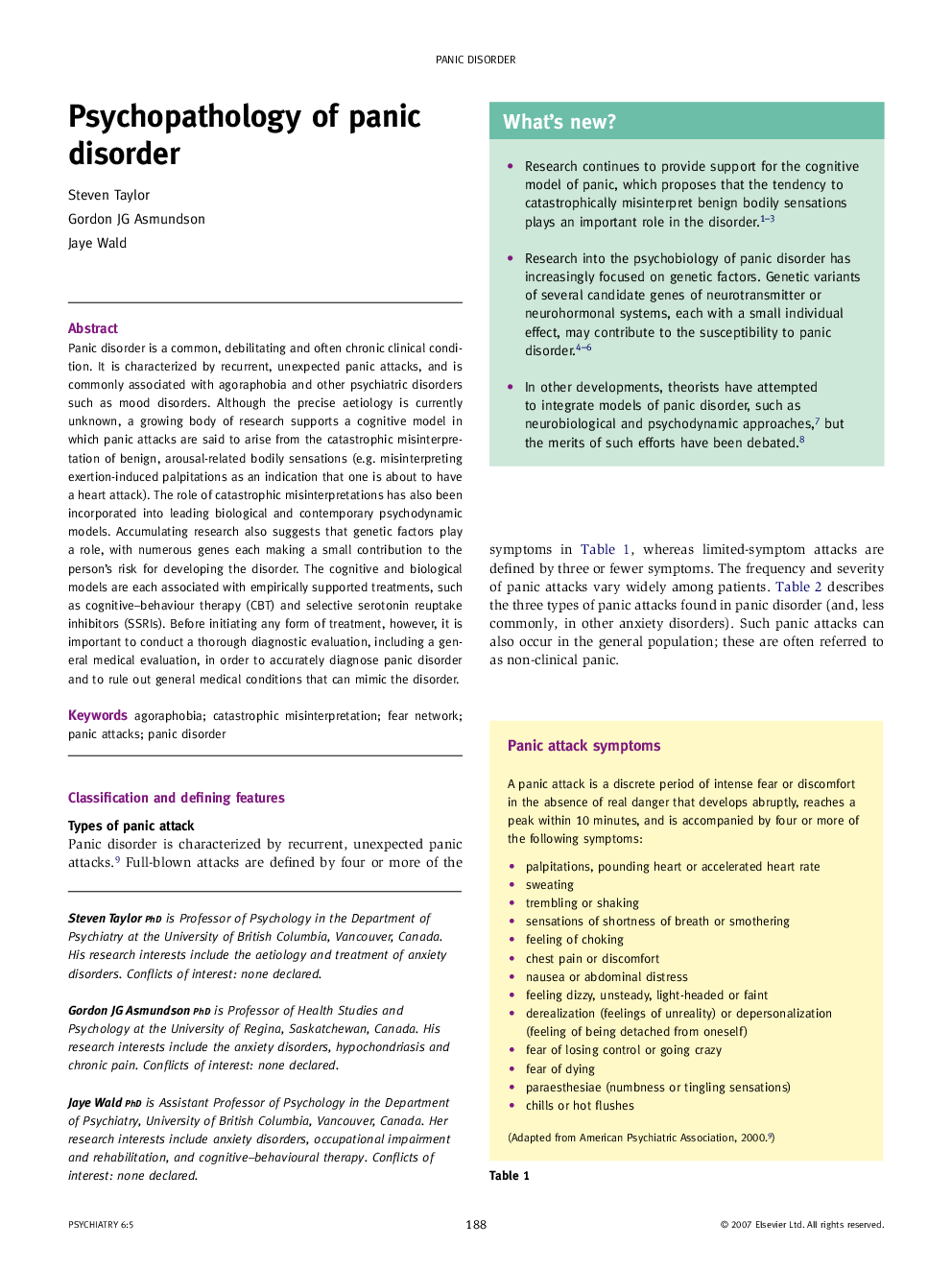| Article ID | Journal | Published Year | Pages | File Type |
|---|---|---|---|---|
| 4190223 | Psychiatry | 2007 | 5 Pages |
Panic disorder is a common, debilitating and often chronic clinical condition. It is characterized by recurrent, unexpected panic attacks, and is commonly associated with agoraphobia and other psychiatric disorders such as mood disorders. Although the precise aetiology is currently unknown, a growing body of research supports a cognitive model in which panic attacks are said to arise from the catastrophic misinterpretation of benign, arousal-related bodily sensations (e.g. misinterpreting exertion-induced palpitations as an indication that one is about to have a heart attack). The role of catastrophic misinterpretations has also been incorporated into leading biological and contemporary psychodynamic models. Accumulating research also suggests that genetic factors play a role, with numerous genes each making a small contribution to the person’s risk for developing the disorder. The cognitive and biological models are each associated with empirically supported treatments, such as cognitive–behaviour therapy (CBT) and selective serotonin reuptake inhibitors (SSRIs). Before initiating any form of treatment, however, it is important to conduct a thorough diagnostic evaluation, including a general medical evaluation, in order to accurately diagnose panic disorder and to rule out general medical conditions that can mimic the disorder.
